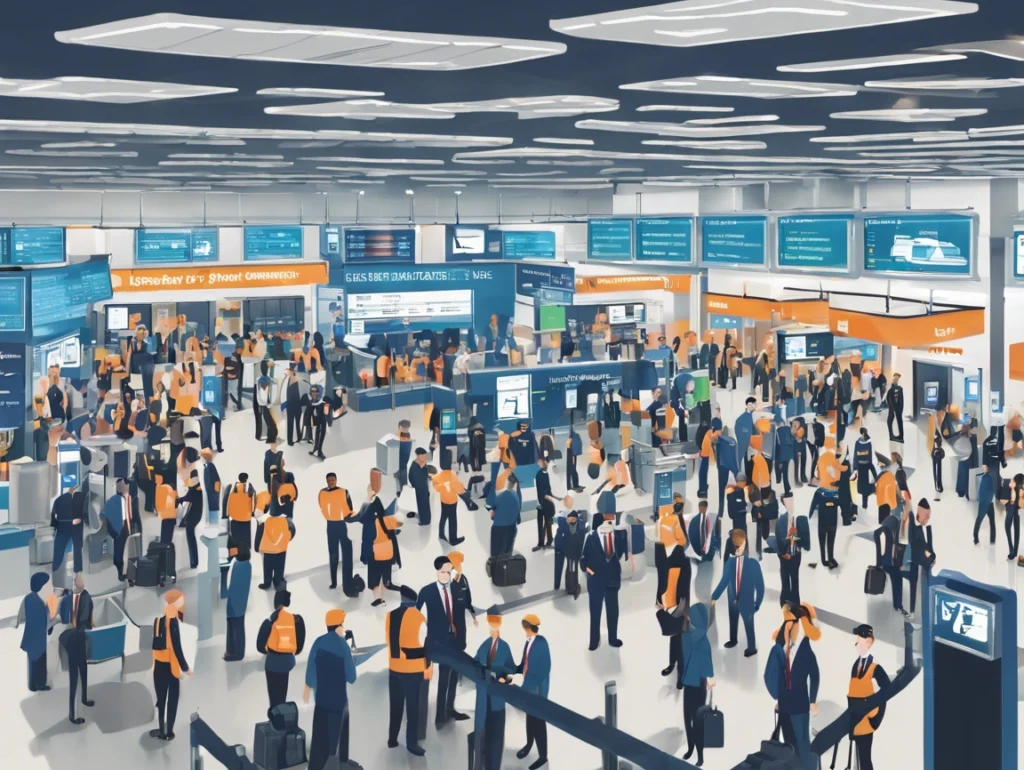Introduction
Airports are part of the complex global transport system, serving millions of passengers and tons of freight every day. However, with this high activity comes a huge responsibility to manage safety adequately, ensuring that the safety of passengers, employees, and aircraft is never compromised. This guide delves into the core aspects of safety management in the airport environment, with a focus on viable practices, regulatory frameworks, and the latest technologies to bolster safety standards.
1. Regulatory Compliance
Understanding Aviation Regulations
Airports must observe a maze of rules as stipulated by international aviation bodies like ICAO and national agencies such as the FAA. These regulations cover almost all areas of airport operations, including runway conditions and passenger safety.
Regular Safety Audits
Safety audits and inspections should be conducted frequently. These audits help identify compliance deficiencies and risks to ensure the airport meets both legal requirements and operational safety standards.
2. Emergency Response Planning
Crisis Management Framework
Every airport must have a robust crisis management plan to address emergencies such as natural disasters, medical emergencies, or security threats. This plan includes responsibilities, communication protocols, and evacuation procedures.
Training and Simulation Drills
Training and simulation drills for staff should be conducted regularly. These exercises help employees handle emergencies efficiently, minimizing confusion and ensuring a quick response when needed.
3. Safety Management Systems (SMS)
Implementing an SMS
A Safety Management System (SMS) is a systematic approach to managing safety risks. It includes policies, risk evaluation, safety assurance, and the promotion of a safety culture to manage and prevent risks before incidents occur.
Utilization of Data Analytics
Data analysis can significantly improve safety performance. By reviewing past incidents and near-misses, airports can identify patterns and make evidence-based decisions to enhance safety measures.
4. Airport Security Measures
Comprehensive Screening Procedures
Screening passengers and their luggage with enhanced technologies, such as walk-through metal detectors, X-ray machines, and explosive detection devices, is critical for maintaining airport security.
Access Control Mechanisms
Electronic badges and barriers are used to control access to restricted areas within the airport, ensuring that only authorized personnel can enter high-security zones.
5. Investigation & Reports of Incidents
Promoting a Reporting Culture
Airport staff should feel empowered to report incidents and near-misses without fear of repercussions. This proactive approach can lead to significant safety improvements.
In-Depth Investigations
Investigating all incidents, regardless of size, helps identify root causes and implement measures to prevent recurrence.
6. Preventive Maintenance and Calculated Check-Ups
Infrastructure Maintenance
Frequent checks of runways, taxiways, terminals, and other infrastructure components are essential to assess and repair damages before they compromise safety.
Equipment Safety Checks
Regular safety checks for equipment like baggage handling systems and emergency response tools ensure that airports are always prepared for any situation.
7. Awareness and Development Trainings
Comprehensive Staff Training
Ongoing training programs should be provided to all airport staff. These should cover safety procedures, emergency protocols, and customer relations to ensure everyone knows their responsibilities.
Public Safety Awareness
Raising awareness among travelers about safety measures and the airport’s security protocols helps reduce risks and contributes to a safer environment.
8. People’s Participation in Safety
Building Partnerships
Safety management requires collaboration between various stakeholders, such as airlines, security agencies, and regulatory bodies. Building strong relationships ensures that safety standards are consistently upheld.
Community Engagement
Engaging the community in airport safety initiatives enhances their understanding of airport operations and contributes to a safer environment.
9. Technological Advancements
Adopting Innovative Technologies
Airports are increasingly implementing technologies like biometric identification, drone surveillance, and automated emergency responses to improve safety and streamline operations.
Utilizing Big Data for Safety Management
Big data helps airports identify operational risks and refine safety protocols, allowing for better decision-making based on real-time data.
10. Monitoring and Evaluation
Establishing Key Performance Indicators (KPIs)
KPIs help track safety performance and highlight areas for improvement. Common KPIs include incident rates and compliance levels.
Continuous Improvement
Safety procedures should be continuously reviewed and updated to adapt to new threats and challenges identified through data analysis and experience.
Conclusion
Safety and security management at airports are crucial to ensuring the well-being of passengers and staff. By focusing on regulatory compliance, emergency preparedness, technological advancements, and continuous improvement, airports can create a secure travel environment. For more information on airport safety management, industry trends, and benchmarks, sign up for the Kamranology newsletter.


This is an excellent and well-structured guide to airport safety management. It effectively balances regulatory insights, practical measures, and forward-looking technological trends, making it a valuable resource for industry professionals and stakeholders. The emphasis on collaboration and continuous improvement is particularly noteworthy, as it ensures adaptability in an evolving aviation landscape.
Safety management in any places (including airports) are very important. Otherwise, it’ll be a hazardous situation and would cause a lot of damages to both people and properties.